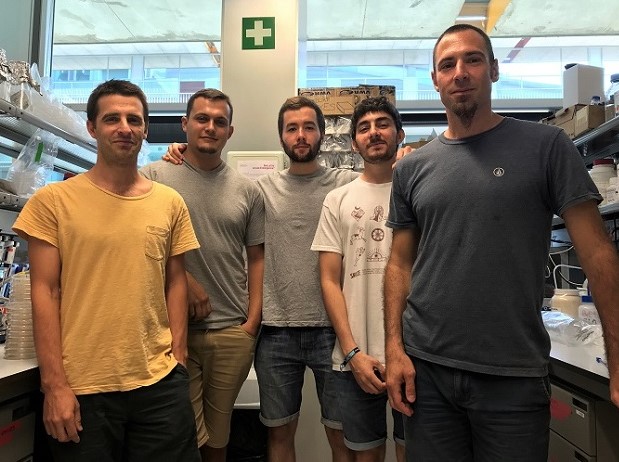Scientists reveal unexpected mechanisms that govern protein expression and cell proliferation

Switching genes from “on” to “off” states (changing gene expression) is a crucial and constant process in the life of any cell, so it has implications in any disease. This means that we need to understand the mechanisms that regulate changes in gene expression for developing new therapies.
One of the key elements are transcription factors, which are proteins that allow genes to be expressed at the level of transcription (the starting point of gene expression). A single transcription factor can alter the expression of many genes, called target genes, and the amount of alteration in each of them may vary greatly. This is called the “transcription factor response”, and it determines the extent to which target gene expression is driven by a given transcription factor.
By way of example, oncogenes, which are genes that promote cancer, are often inactive in normal cells. It may eventually happen that the transcription factors that regulate them become active, with an increase in oncogene expression. In this case, the transcription factor response of the target oncogene would determine its ability to become active (and promote tumour growth). Therefore, it is crucial to understand the biological mechanism that explains this response, as it is a key process in any cell.
The study shows that all the regions of the target gene contribute to the transcription factor response
In this sense, the regions of the gene may be very important. The current belief is that promoters encode this response, as they are the regions of target genes that are bound by the transcription factor. This model explains that the affinity (the ability and strength of the binding) of a transcription factor with a given promoter will drive one or another target gene expression level.
However, a new study performed by researchers with the group of Lucas Carey in the Systems Bioengineering Programme at Pompeu Fabra University provides a completely new paradigm. The study, published in Cell Reports and led by Miquel Àngel Schikora Tamarit, shows that all the regions of the target gene contribute to the transcription factor response, with many implications in cell behaviour.
The researchers used a combination of mathematical modelling and genetic engineering of cells to infer the role of several cellular processes in this response. They found that most target genes can buffer the effect of having high transcription factor activity. “This means that, even if the transcription factor is very active, the increase in expression of the target gene will not be proportional”, explains Miquel Àngel Schikora.
This mechanism is a way to have the expression of deleterious genes controlled
Carey and his team propose that is due to the nature of the cellular machinery that enables gene expression: proteins involved in building proteins from genes. When a transcription factor is very active, it is unlikely that the machinery molecules needed by the target gene to be expressed will increase proportionally. This means that the target gene expression does not only depend on transcription factor activity; it is constrained by the amount of other factors required in the process of building proteins. For example, if there are 100 molecules of active transcription factor in a cell, one would expect it to be able to build 100 proteins of a target gene. But this is not true if there are only 10 machinery molecules available, which would result in only 10 target gene proteins. This limitation model explains the transcription factor response of most genes.
The study also shows that this mechanism is key for having normal cell fitness and behaviour, as it is a way to have the expression of deleterious genes controlled. “It opens a new paradigm of how the regulation of gene expression works, which is important for understanding the biology of any living organism. This work represents an example of how quantitative approaches can be useful for understanding biological systems”, concludes Lucas Carey.
This work was supported by Ministerio de Economía y Competitividad (MINECO) and the Fondo Europeo de Desarrollo Regional (FEDER) (BFU2015-68351-P), AGAUR (2014SGR0974 and 2017SGR1054) and the Unidad de Excelencia María de Maeztu, funded by MINECO (MDM-2014-0370).
Reference article
Miquel Àngel Schikora-Tamarit, Guillem Lopez-Grado i Salinas, Carolina Gonzalez Navasa, Irene Calderon, Xavi Marcos-Fa, Miquel Sas, Lucas Carey. Promoter activity buffering reduces the fitness cost of misregulation. Cell Reports. 2018. DOI: 10.1016/j.celrep.2018.06.059.
